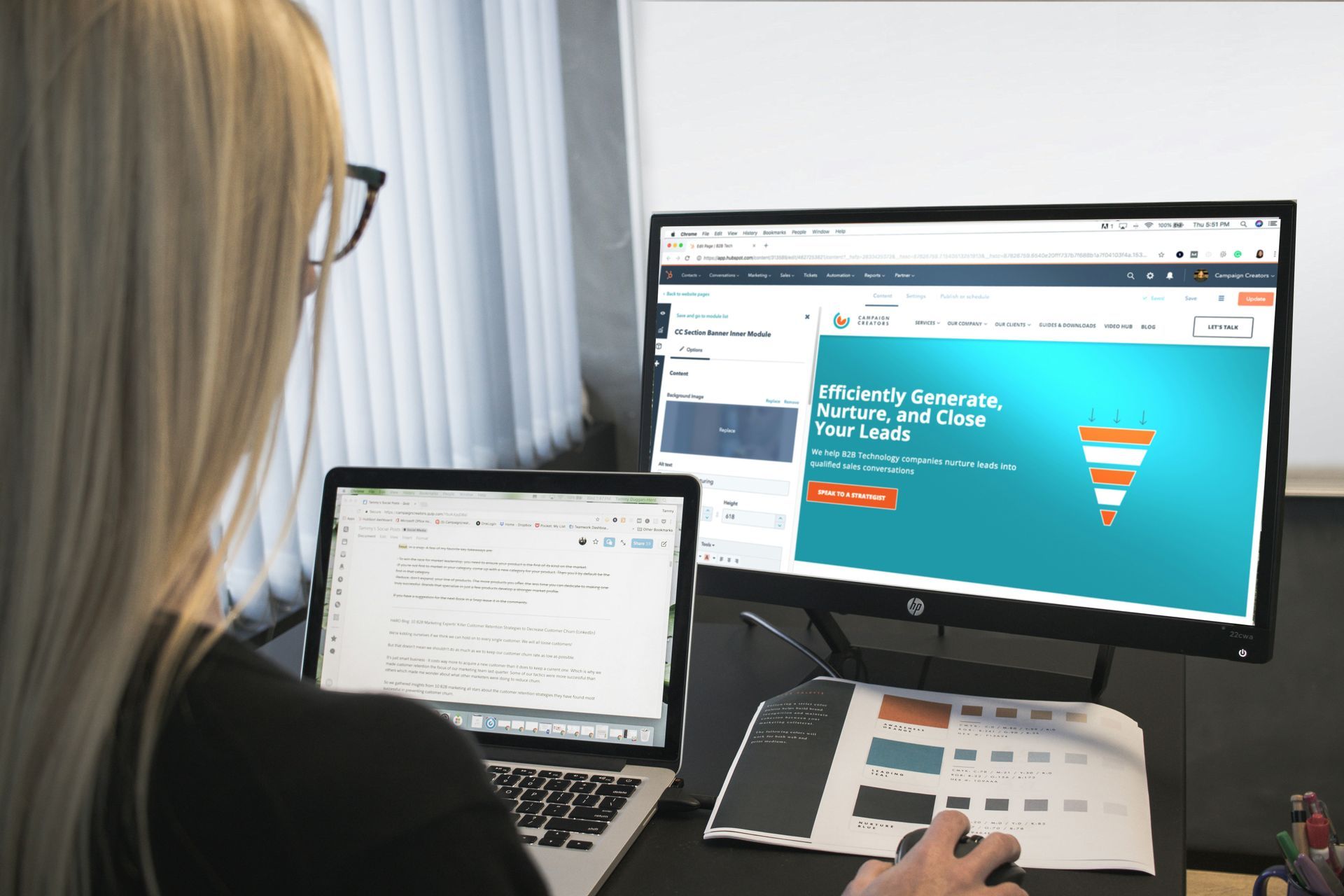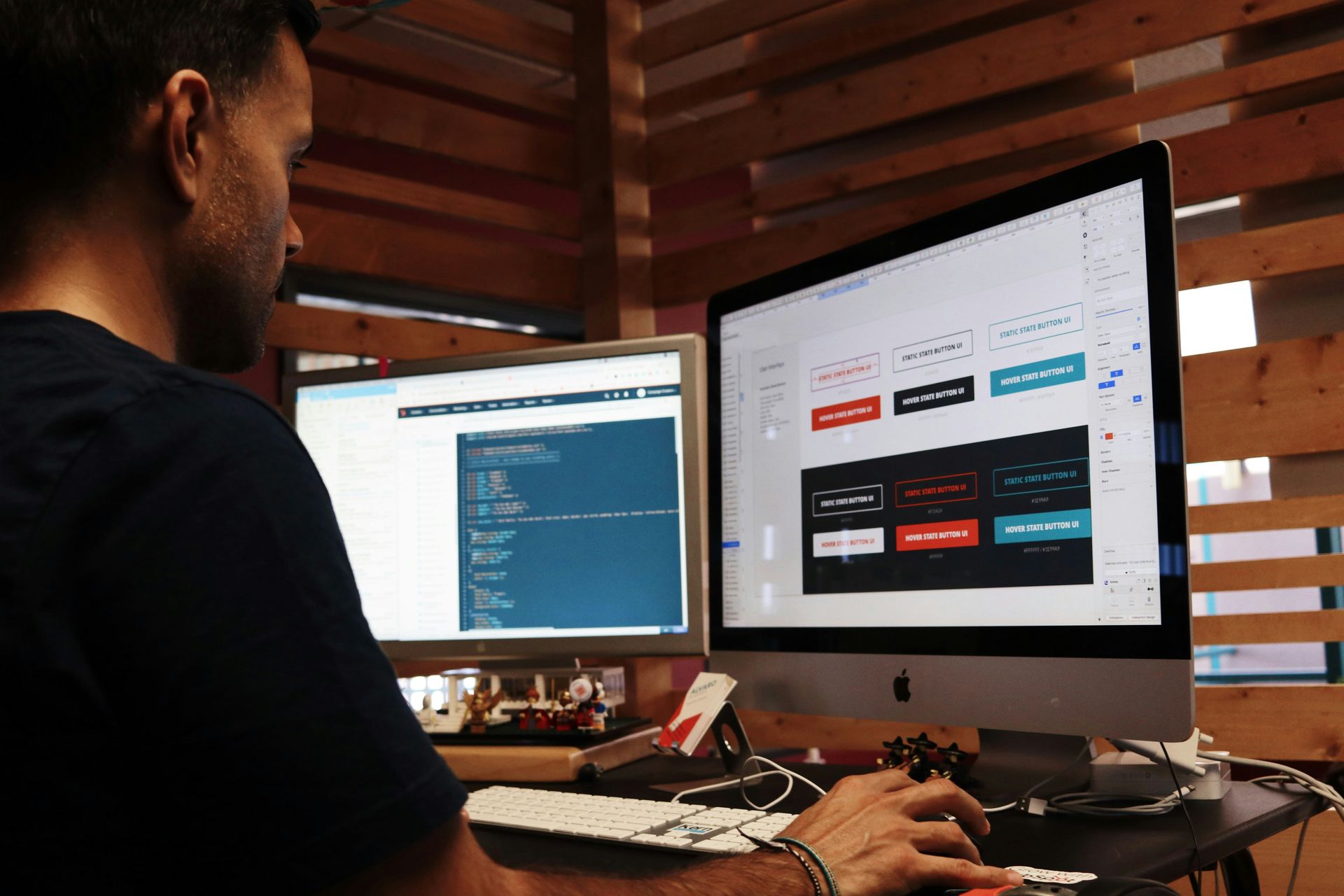The Best Times To Post on LinkedIn… IN 2025!
What do sports and LinkedIn thought leadership and social selling have in common?
Timing is everything.
And when it comes to timing your LinkedIn posts, you’re likely still part of the 9:00 AM crowd. There’s nothing wrong with that — unless you’re looking for a sure-fire way to get scrolled past.
Posting at 9:00 AM on a Tuesday may have gotten the maximum engagement you wanted in 2024. But it’s 2025, and as with every new year, user patterns and algos change.
Luckily, we’re doing you a solid right now by giving you an actual LinkedIn posting schedule for 2025. Here’s your definitive guide to the best times to post on LinkedIn in 2025.
What the 2025 Data Says
___________________________________________________________________________
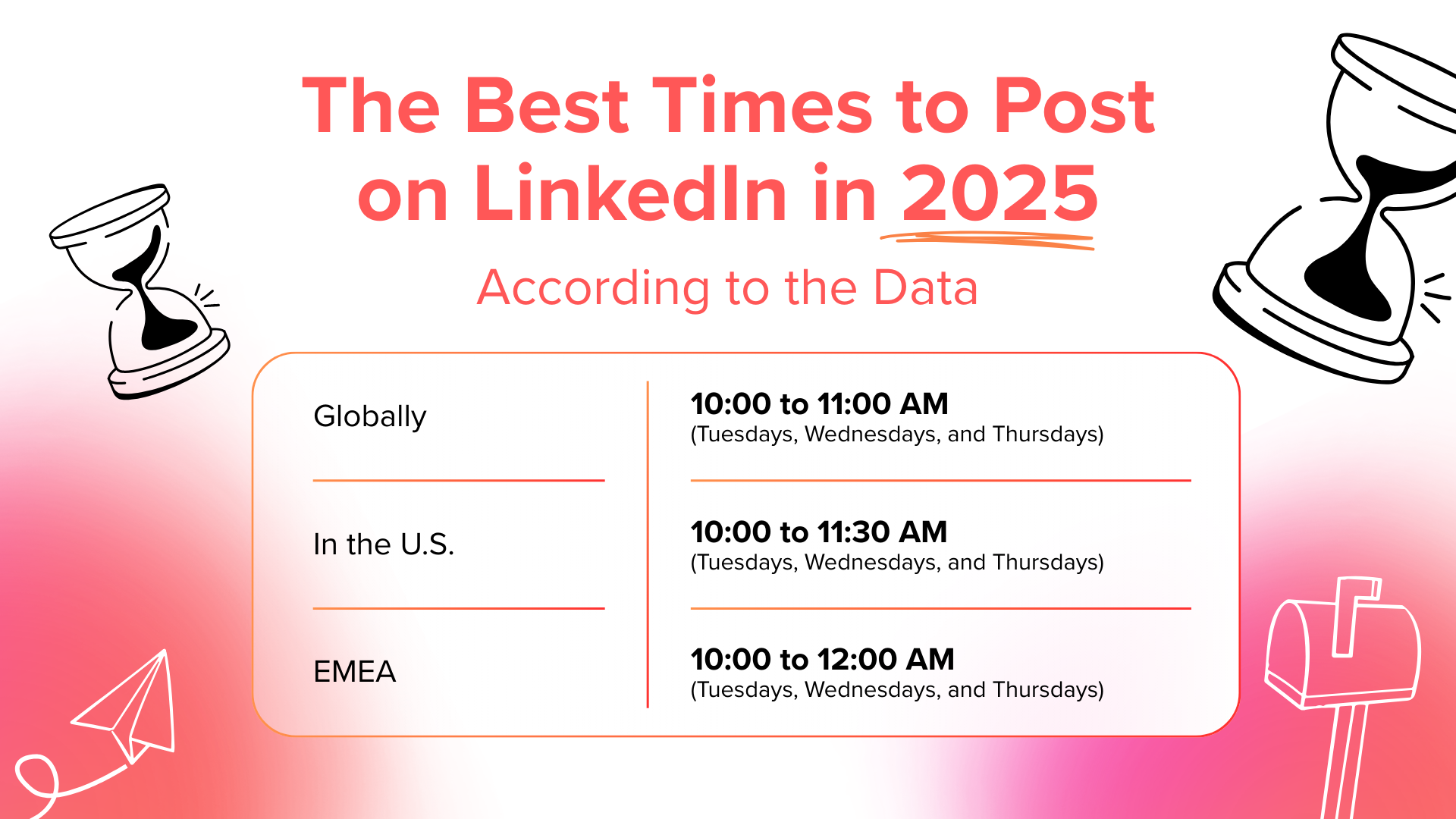
9:00 AM on a Tuesday may have been cool in 2024 — but not in 2025. To give you the up-to-date insights on the best times to post on LinkedIn, we’ve sourced data from Sprout, LinkedIn, Shield Analytics, and Waalaxy.
Here’s what we’ve seen from the latest data:
| Metric | Global Averages | U.S. (PST) | EMEA |
|---|---|---|---|
| Best Time Windows | 10:00 to 11:00 AM | 10:00 to 11:30 AM | 10:00 to 12:00 PM; some sources also suggest 7:00 PM CET |
| Best Days | Tuesday, Wednesday, and Thursday | Tuesday, Wednesday, and Thursday | Tuesday. Wednesday, and Thursday |
| Emerging Windows | Early mornings (7:00 to 8:30) and evenings (9:00 to 10:00) | Early mornings (7:30 to 8:30) and late afternoons to early evenings (4:00 to 6:00) | Early mornings (7:55 to 10:55) and evenings |
Why “The Best Time” Isn’t One-Size-Fits All
____________________________________________________________________________
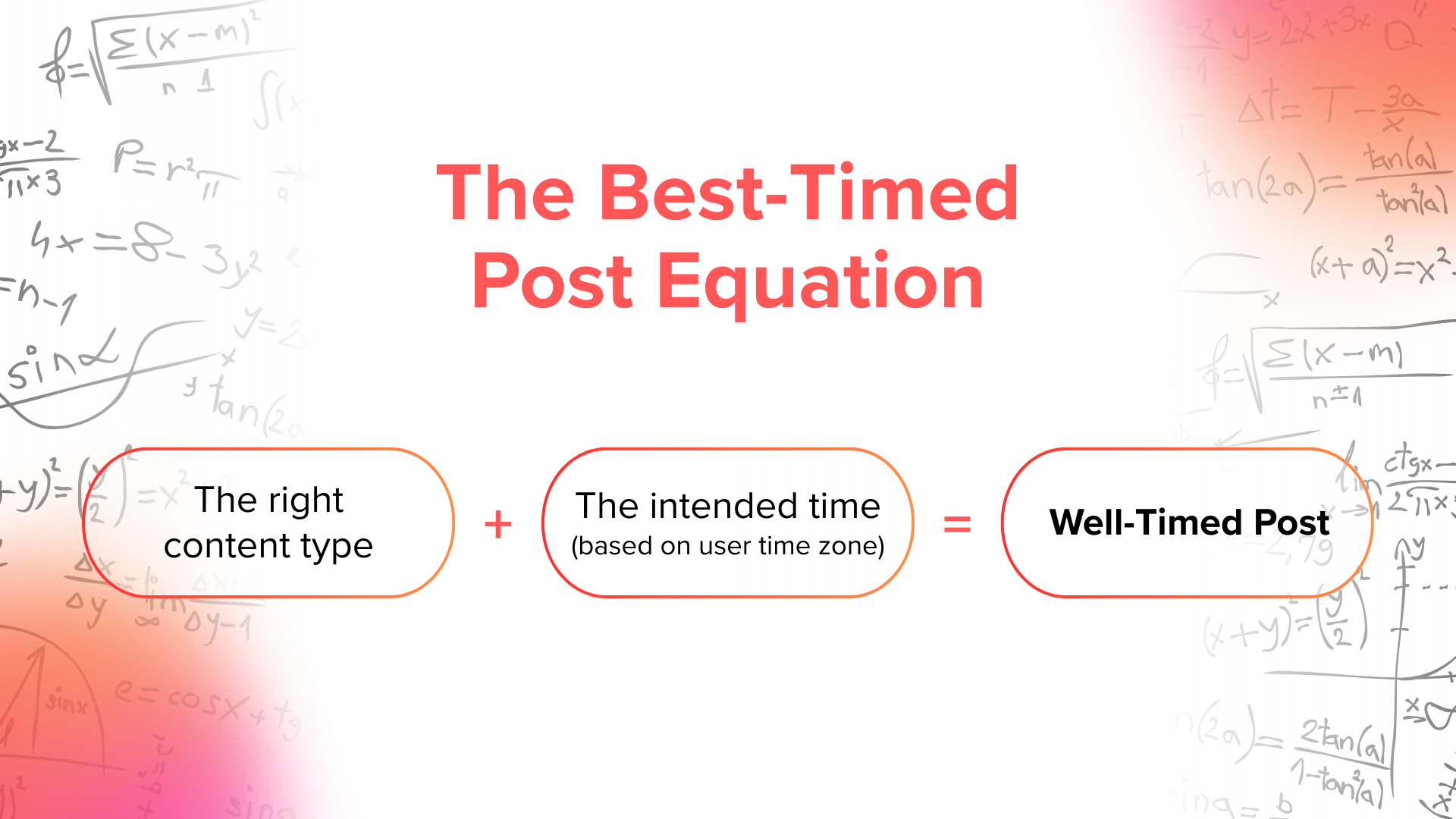
As you’ve seen, there’s some variation in the best times to post. But before you pull the trigger on your posting schedule in 2025, be aware that there’s no such thing as “the absolute best time” to post.
Here’s why.
Time Zone Differences
Let’s start with time zone differences. While the average posting times are 10:00 to 11:00 AM, your audiences will be seeing and engaging with your posts based on the time zones they’re in. So, if you post at 10:30 AM PST, there’s a chance your audience may be consuming your content in the evening halfway around the world.
Content Types for Certain Times
The difference in times is also why some forms of content do better than others depending on when you post, which brings us to the next reason for why there’s no one-size-fits-all posting time.
For example, text posts and polls are more likely to get engagement in the morning when people browse LinkedIn over a cup of Joe. By contrast, you’ll get more impressions posting video content during evening times for your targeted users.
Algorithm Recency and Relevance
And then, there’s the LinkedIn algorithm. The platform’s algorithm favors content that’s relevant and useful, and the algorithm judges useful content based on the number of early interactions or impressions it gets.
As a result, you need to get your LinkedIn algorithm timing down. And the best way to do this is to post engaging content as soon as possible based on your audience’s location and time zone — which, as we’ve seen, can differ.
Build Your Own Timing Playbook
____________________________________________________________________________
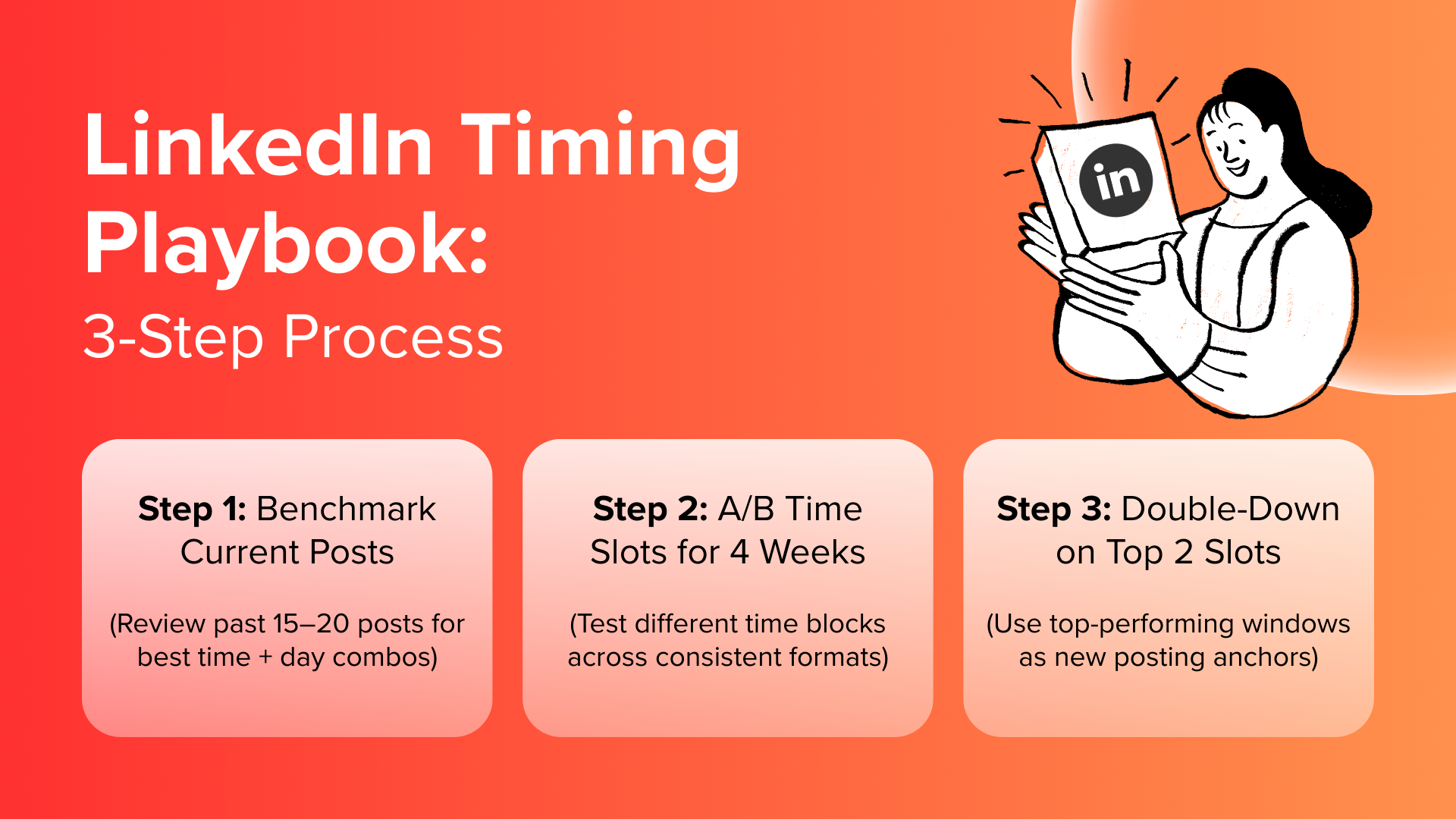
We’ve just given you the global data. But that’s not why you’re still here, is it?
You’re here because you want to turn that data into an actual LinkedIn posting schedule for 2025.
So, without further ado, here’s your data-backed guide posting playbook personalized to your audience, your content, and your goals.
Step 1: Benchmark Current Posts
The best place to start is with your last 15 to 20 posts. Which ones perform, and at which times do you post them?
You’ll have to measure other metrics like reshares and profile views, too. Stack these numbers up, and you’ll see patterns emerge.
Step 2: A/B Test for the Next Four Weeks
Once you’ve seen your best-performing content, pick two different windows. For example, one may be at the tried and tested 10:00 AM window, and the other may be at 7:00 PM if you’re targeting EMEA users.
From here, rotate your posts across those over the course of four weeks and see where interactions and impressions are highest.
Step 3: Double-Down on the Top Two Slots
After four weeks, you’ll see various times where impressions and engagements are at their highest. Lock the top two times in because these will be your primetime posting windows.
Frequency vs. Timing
Sure, timing matters (and a great deal). But there’s nothing better than posting during your primetime windows and doing so — wait for it — consistently.
You see, you could post at the “perfect” time every now and then and still lose momentum if you’re only showing up once every other week. After all, LinkedIn’s algorithm rewards activity, recency, and relevance, which all require a steady presence.
So, how often should you post? When in doubt, there’s much value to posting three times a week.
The frequency is just high enough to stay visible but not so much that you churn and burn half-baked content.
Mistakes To Avoid
So, you now know when to post and how you can create your posting playbook for 2025.
Here’s what not to do:
- Ignoring weekends: Believe it or not, weekends can be prime time for B2B content with a personal or reflective angle. Don’t skip them just because it’s not a “workday.”
- Dropping posts at lunch PST: 12:00 to 1:00 PM Pacific might feel convenient, but it often tanks reach because East Coast folks are wrapping up, and international users have logged off.
- Cross-posting at the same time across all platforms: LinkedIn isn’t Instagram, and it definitely isn’t TikTok. So, while copy-pasting content is fine, don’t use the same approach for your LinkedIn content.
FAQs
Does LinkedIn penalize weekend posts?
There’s no law against posting on weekends — but know that weekend posts aren’t for everyone.
How long does a LinkedIn post stay in a feed?
A LinkedIn post can stay active in feeds for several days, especially if it keeps getting engagement. But the first 90 minutes are critical for triggering momentum.
Is video timing different?
Yes, it is! Video performs better in the evenings or during commute hours when users have more time to watch.



